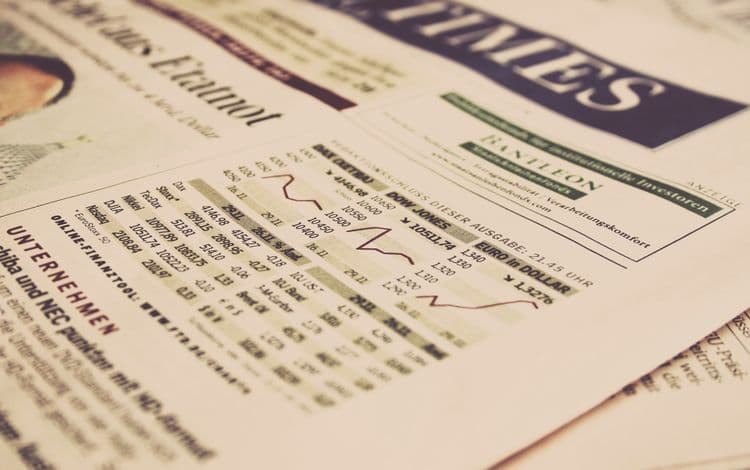The subject of the US economy is a relatively big one. While most understand what is meant by the term economy, breaking it down and describing the various components of the US economy can be a little trickier. From understanding the role of supply and demand to grasping the country's fiscal policy, the term "economy" has numerous facets. In this article, we take a closer look at some of the main components driving and subsequently defining the economy.
What is the GDP?
GDP, or gross domestic product, is the measurement of all that the country produces that adds value. If the GDP growth rate starts to go negative this could signal a potential recession. The US has endured several periods of recession and when a recession continues for several years, the country is then entering what is called depression.
Making up the GDP are things such as consumer spending, government spending as well as exports. Business spending is also a part of the GDP. Boasting the largest economy in the world, the US is just ahead of China in terms of GDP.
Supply and Demand Affect on the Economy
The concept of supply and demand by and large is what spurs the economy. That is to say, a demand which equates to personal consumption is what drives supply. Supply includes things such as natural resources, materials, and labor.
These two ideas interact to determine market prices. When prices are higher demand tends to be lower. Whereas, the law of supply suggests that at higher prices producers will supply more as is justified by the higher prices. The laws of supply and demand are at the heart of what drives the economy.
Inflation and Deflation:How it Affects the Economy
Directly impacted by supply and demand are the ideas of inflation and deflation. When demand is high and yet the supply is low, prices will inevitably go up. This is an example of inflation. When prices are higher often incomes cannot keep pace, and this consequently is when inflation comes to affect the lives of the country's citizens.
The Consumer Price Index is used to measure inflation. However, this can provide information that isn't always reflective of what is going on. The core inflation rate is instead used by the Federal Reserve as this rate does not take into account energy costs which can fluctuate dramatically within a very short period.
Deflation, on the other hand, happens when prices drop. This can also be a negative thing as prices drop on major commodities such as real estate and stocks. In fact, in many instances, deflation is seen as worse than inflation within the context of the economy.
Federal Budget
The federal budget does have an impact on the economy overall. Currently, the budget stands at approximately $4 trillion. The revenue that the government spends in conjunction with this budget for the most part comes from income taxes. The president is responsible for initiating the budgeting process, but Congress is ultimately responsible for passing various packages and thus overseeing fiscal policy.
Most years, government spending will be higher than the revenue gotten from taxes. This then equates to a budget deficit which in turn is added to the national debt.
Federal Reserve
The Federal Reserve is the body that is in charge of monetary policy. The Federal Reserve has several tools at its disposal that largely dictate interest rates. Depending on what shape the economy is in, the Fed will adjust interest rates accordingly to either spur spending or on the flip side, it will raise rates to maintain economic stability. The Federal Reserve is also in charge of regulating the US banking system.
Foreign Trade
Trade policy centers on imports and export interactions with other nations. There are several trade agreements that the US has had in place to more effectively regulate trade with other countries.
Some nations are routinely known for exporting certain goods/resources as either they are adept at creating those goods or have an abundance of a specific resource. This is why trade is so critical to the economy. Countries depend on one another to fill gaps where certain products/materials are needed.
Exchange rates come into play when dealing with foreign trade. The exchange rate is the rate at which one country's currency is converted to another's. When the US dollar is strong worldwide Americans can buy more foreign goods and conversely visitors to the US are at a disadvantage as their currency is not worth as much.
Financial Markets in the Economy
What the stock market and financial markets do during a given period can have a major influence on the economy as a whole. For example, during the Great Depression, the financial markets collapsed thereby sending the country into a dire economic time. The credit crisis of 2008 also threw the country into a financial tailspin as we experienced the Great Recession.
Stock trading can thus be risky as we have seen and yet it is at the backbone of the financial markets. Bonds are considered safer, with treasury bonds being among the safest to invest in. There are also mutual funds comprising a large portion of the financial market.
The goal of stock trading for most investors is to buy stocks low and then consequently sell for a profit when the stock price goes up. This is how many stock investors make their money. Investors who regularly buy and sell stocks often spend countless hours studying the market as they try to time them.
First Union Lending has been working with small businesses across the US for years now. We get companies the cash they need exactly when they need it—not weeks or months from now. Our goal is to help our clients grow and succeed. We offer short-term loans, lines of credit, and merchant cash advances among other programs. Some clients receive funding in as little as two days. Call today and let's get started together!
